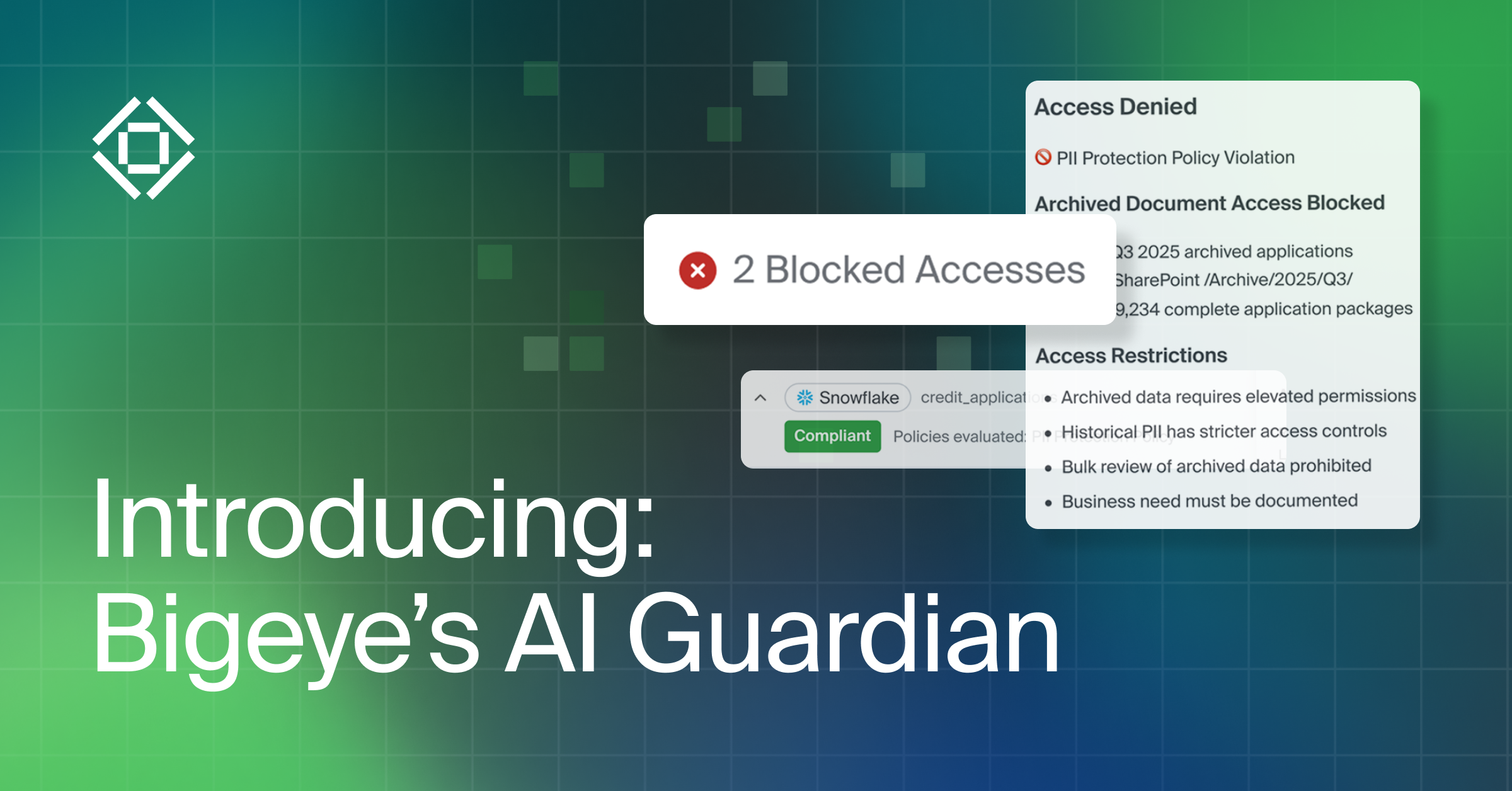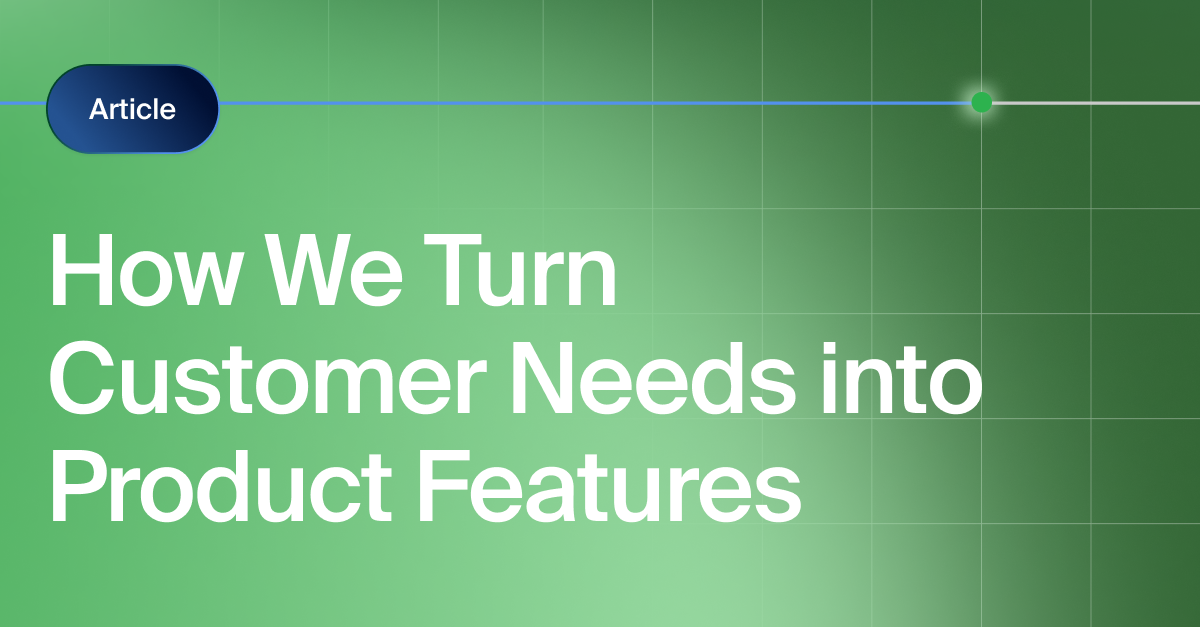Get the Best of Data Leadership
Stay Informed
Get Data Insights Delivered
We first announced our integration and partnership with Alation in 2021 and, since that time, we've seen a dramatic surge in interest from organizations who want combined data catalog and data quality capabilities to empower their employees with accessible, reliable data.
In response to this surge, our friends at Alation launched the Open Data Quality Initiative and we're excited to announce that our updated Bigeye Alation integration uses the Open Data Quality Framework (ODQF) to deliver even more value to our joint customers.
A quick overview of Bigeye
Bigeye is a data observability platform that provides comprehensive monitoring, anomaly detection, and lineage-based root cause and impact analysis for data pipeline reliability and data quality use cases. With Bigeye, data producers can find and fix issues before they impact the business and data consumers can use data confidently, without ever having to question if it's reliable.
Bigeye's enterprise-ready platform is built for scale. We can monitor thousands to tens of thousands of tables across cloud and hybrid data stacks and offer dozens of native connectors for cloud data warehouses, data lakes, and OLTP databases like MySQL.
Bigeye offers an easy no-code experience for data analysts and scientists, along with a robust set of advanced features like monitoring as code, a command-line interface, and a REST API for advanced data engineering teams who want to integrate Bigeye into their existing workflows.
Combining data governance and data quality to drive business insights
As a data catalog and governance platform, Alation helps customers answer questions such as:

By layering on data observability insights from Bigeye, customers are now able to answer additional questions about the quality and reliability of their data, such as:

With answers to both sets of questions, organizations are able to increase the usage and ROI of data by giving business users the freedom to find the data they need, and use it with confidence that it's reliable.
Alternatively, if there is a data issue, users will have insight into the issue before they use the data to make a business decision or share with customers. Data producers can use this joint visibility to gauge the downstream impact of any issues, identify their root causes, and quickly resolve them.
Delivering reliable data with the Alation + Bigeye integration
With Bigeye's Alation integration built on ODQF, Alation customers who use Bigeye can see data pipeline health and data quality metrics from Bigeye right in the Alation Data Catalog for no-fuss, one-stop insights.
When a user views a table in Alation, they’ll see a deprecation trust alert on any table with unhealthy data alerts. Bigeye will also warn the user if we were unable to run a check on a table, providing instant insight into whether the table is healthy and ready to use.

These same alerts are also displayed in Alation compose, helping stewards know if data is ready to use before they run a query.

Users can also check the current status for each metric by visiting the health tab. If a data producer needs to triage an issue, they can simply click a metric to open Bigeye and explore upstream root causes and downstream impact.

Bigeye also provides automatically-generated debug queries. This is powerful, unique capability helps users fix issues faster by showing them exactly which rows are violating a given rule.

As soon as an issue is resolved in Bigeye, Alation users can see the updated metric status and trust flags.
As a strategic Alation partner and Open Data Quality integration partner, we are committed to providing our joint customers with a seamless, first-class experience. Together, Bigeye and Alation allow customers to unlock the power of their data with confidence that it's always accurate and reliable.
Monitoring
Schema change detection
Lineage monitoring


.webp)






